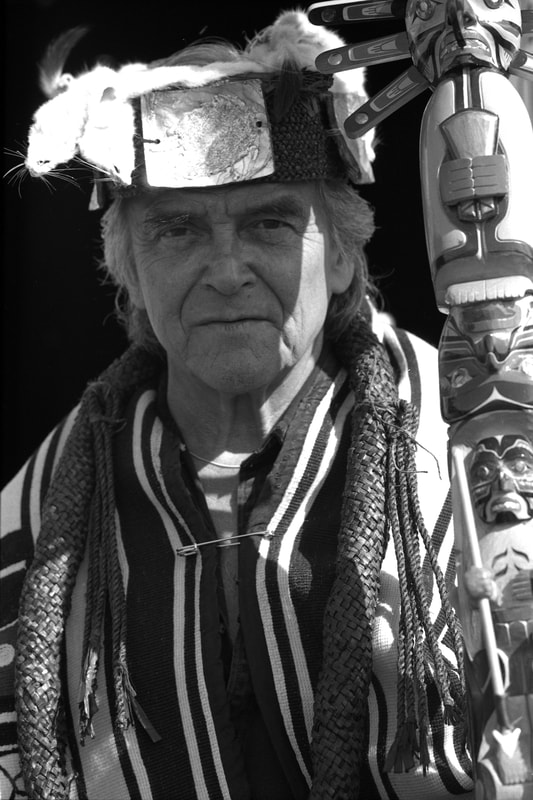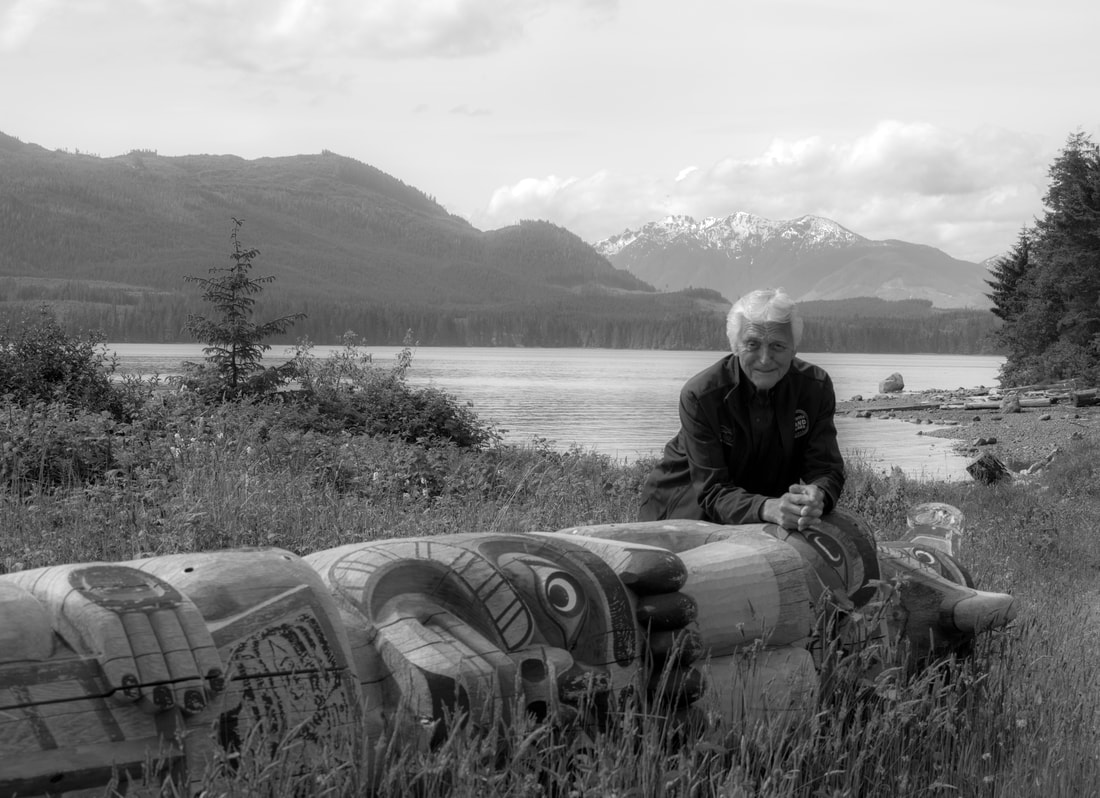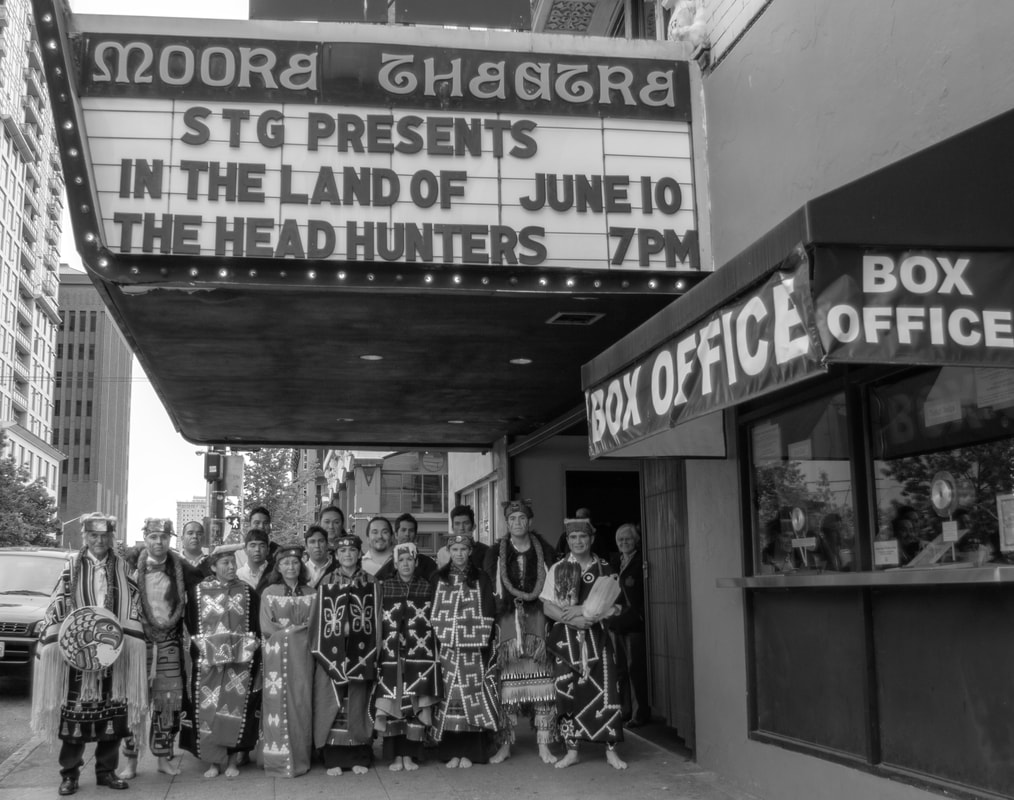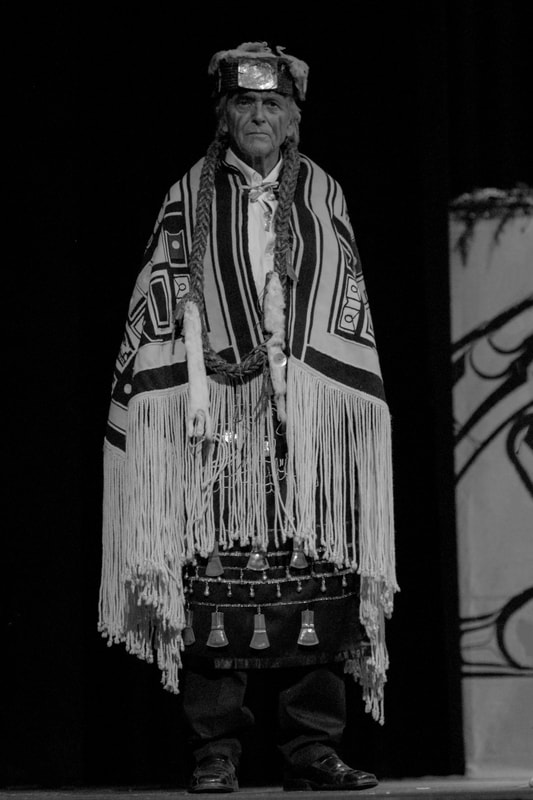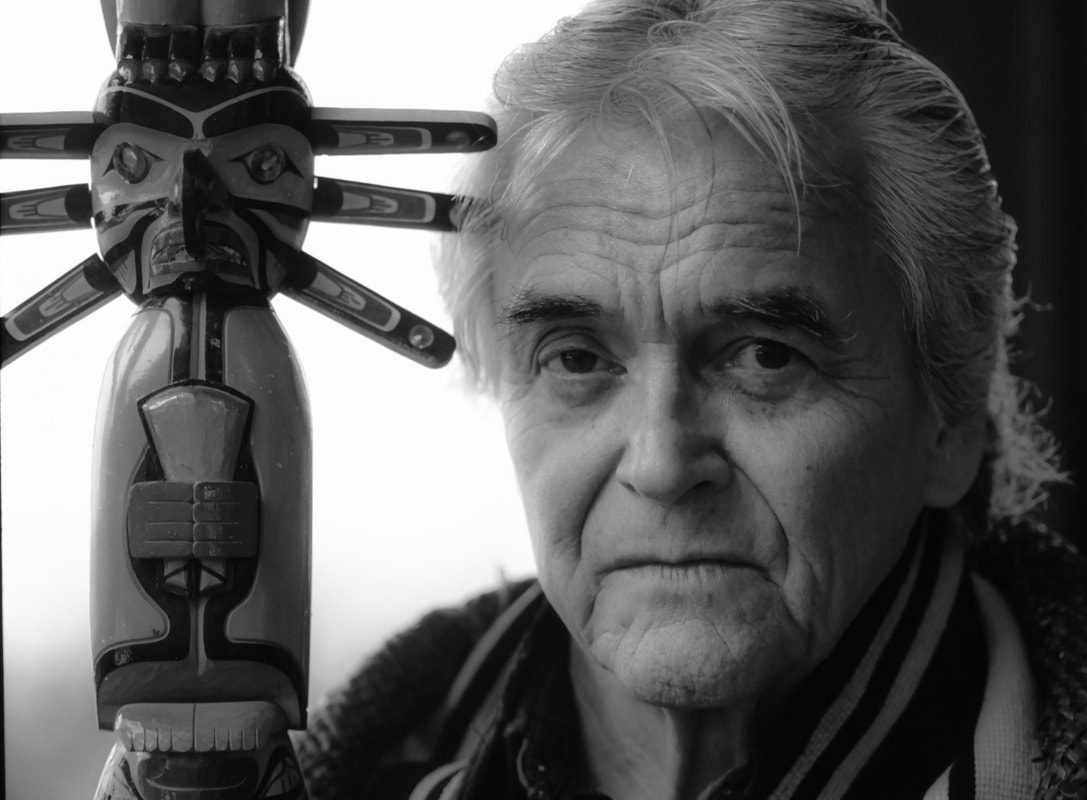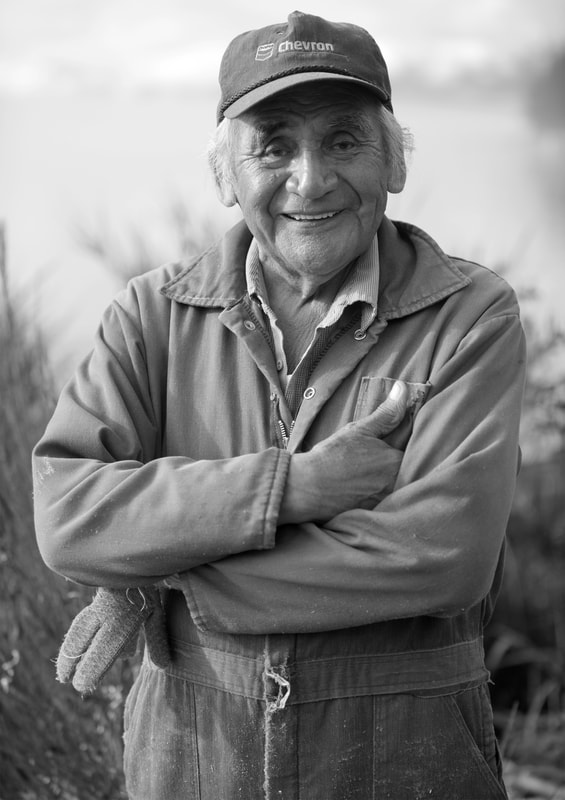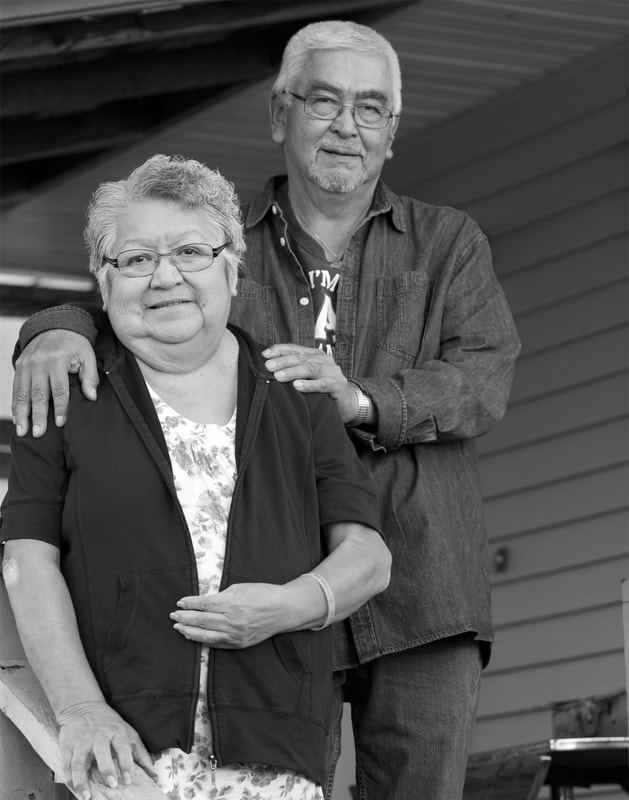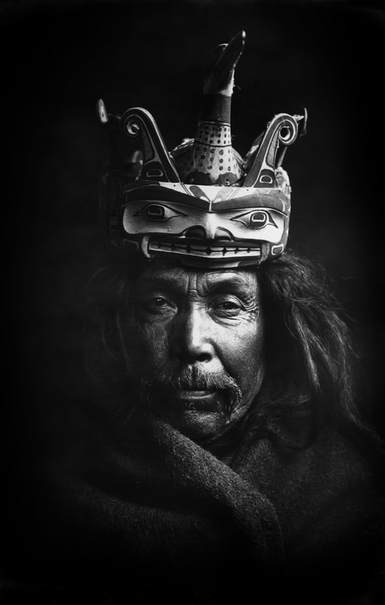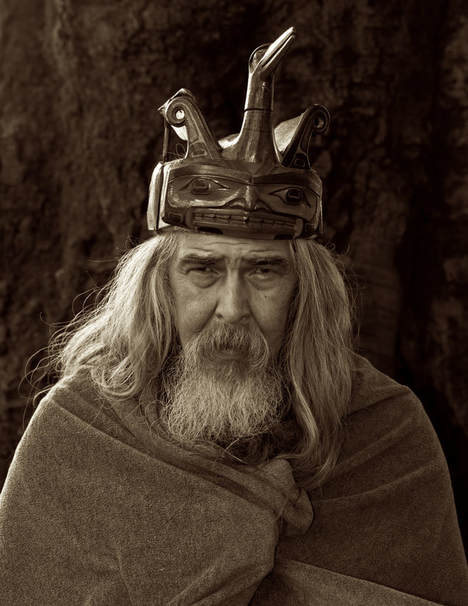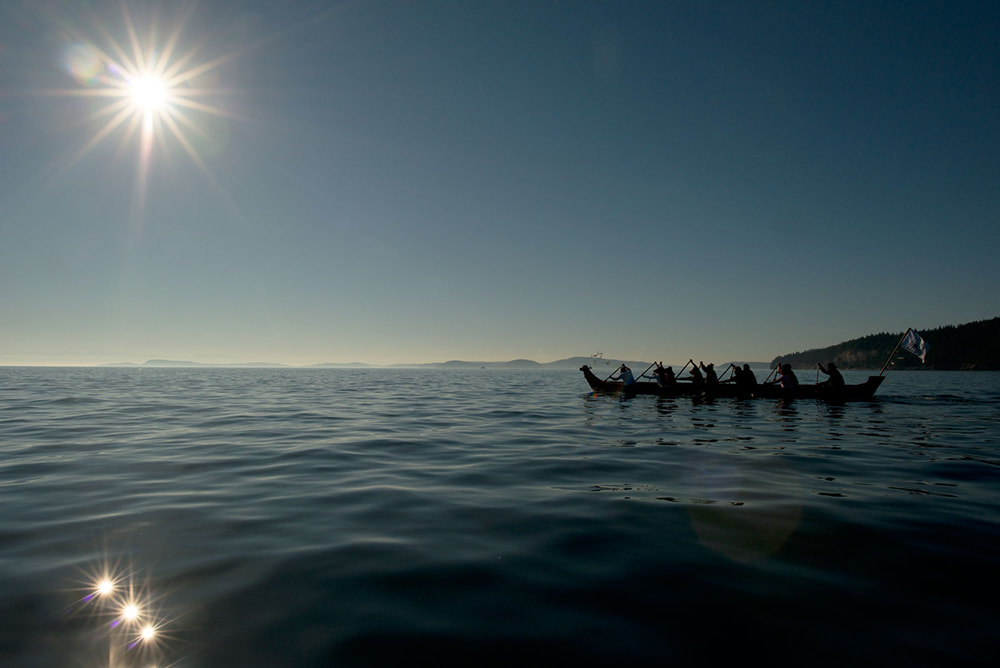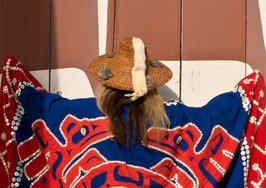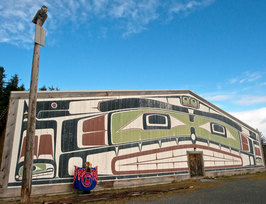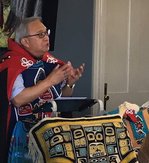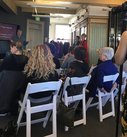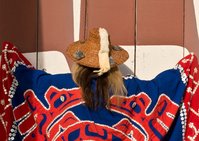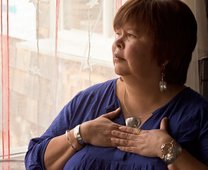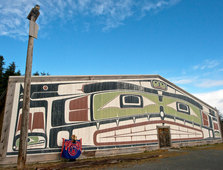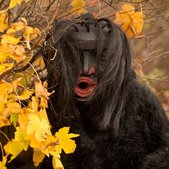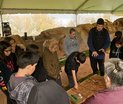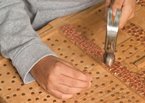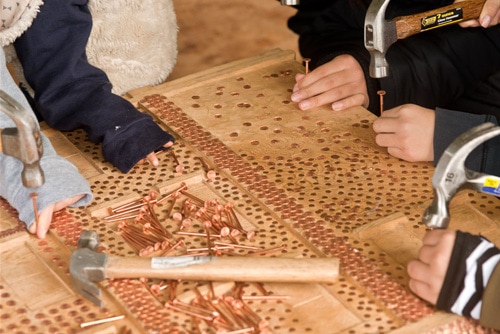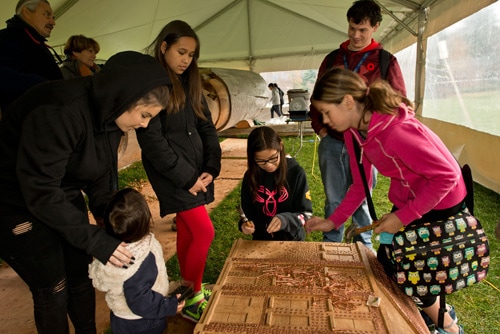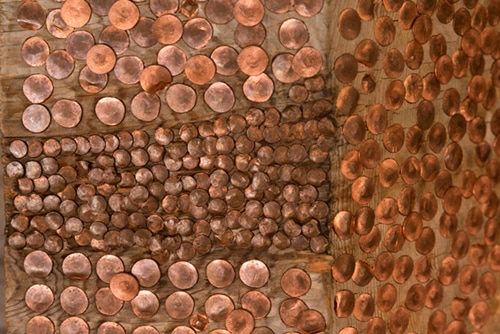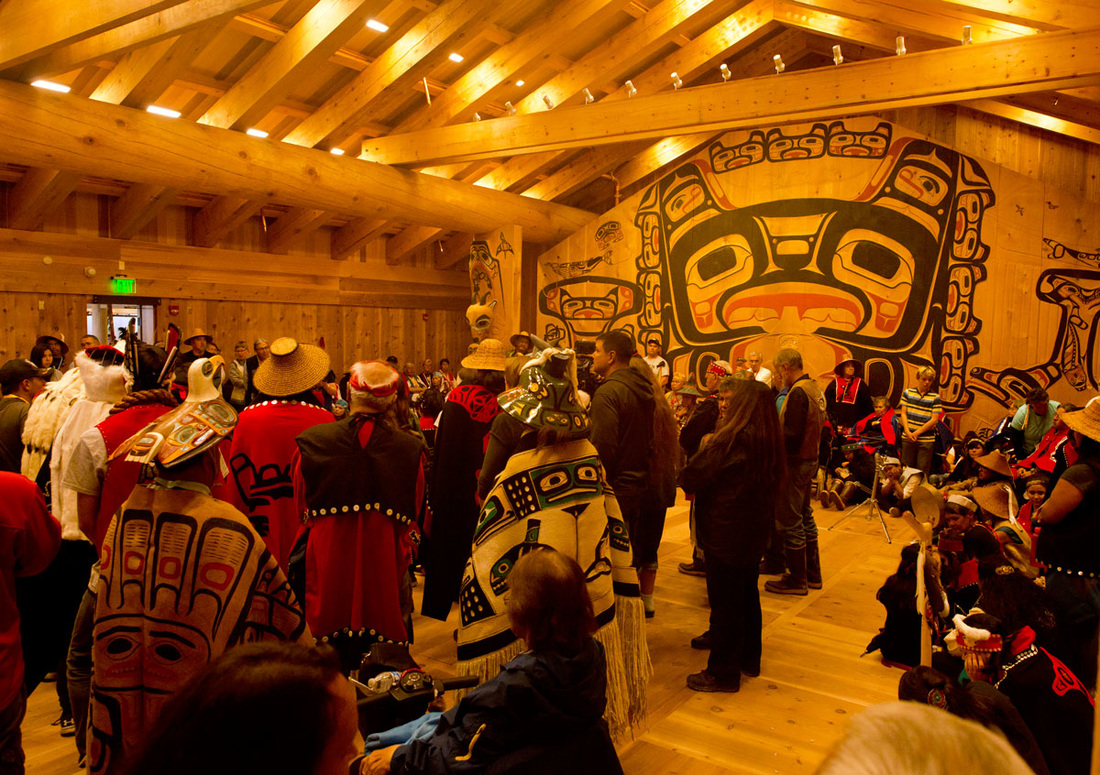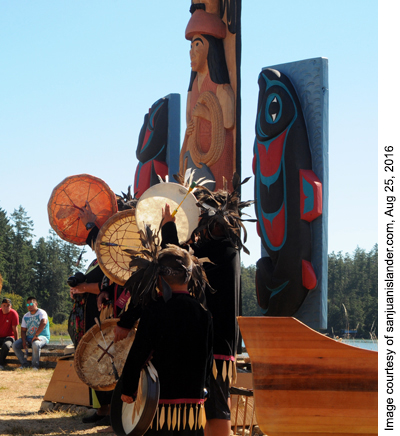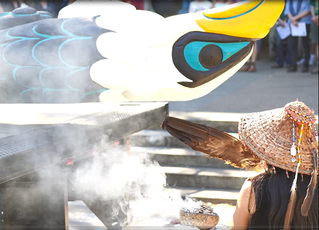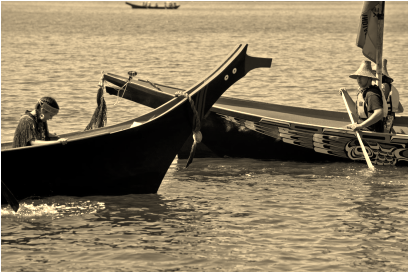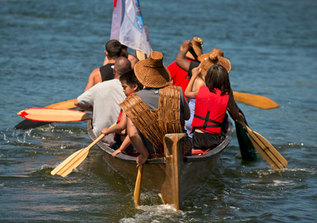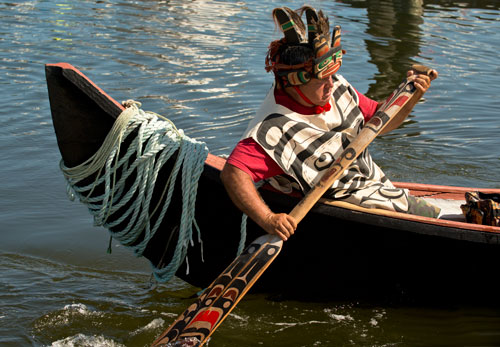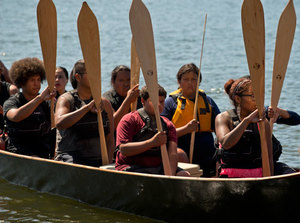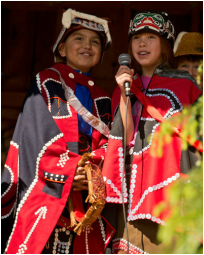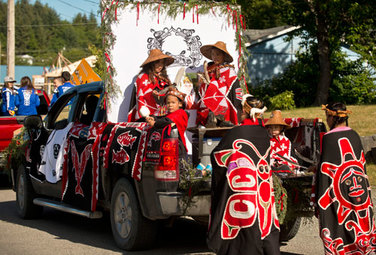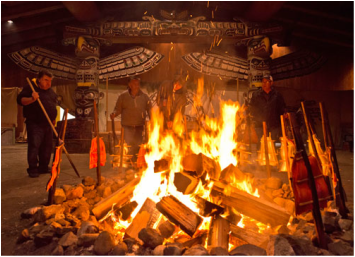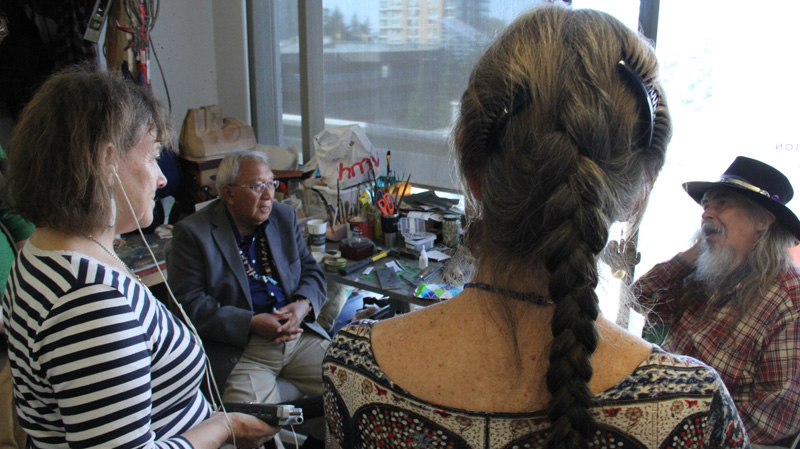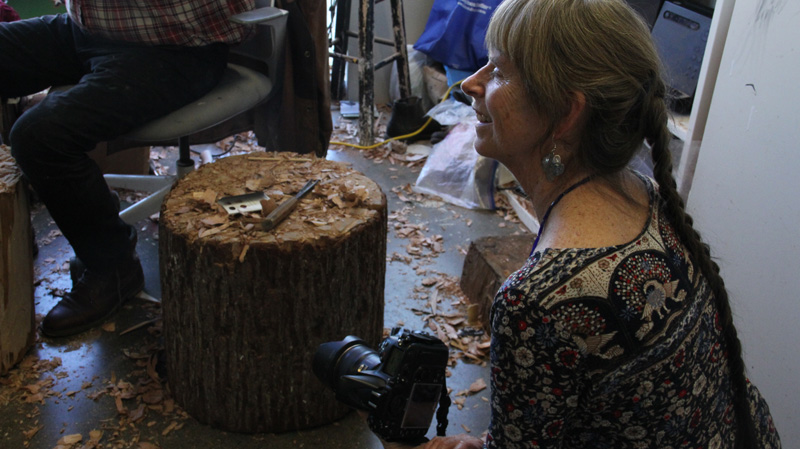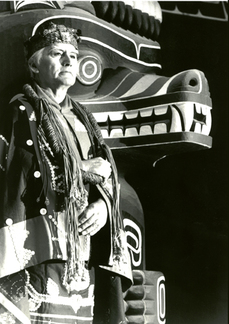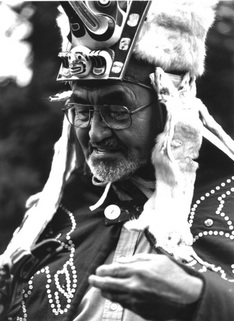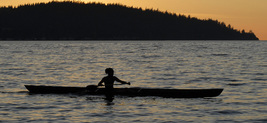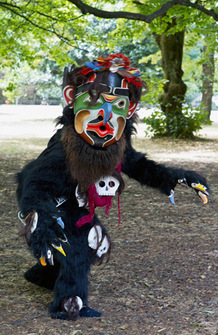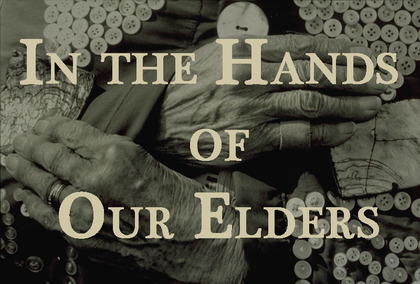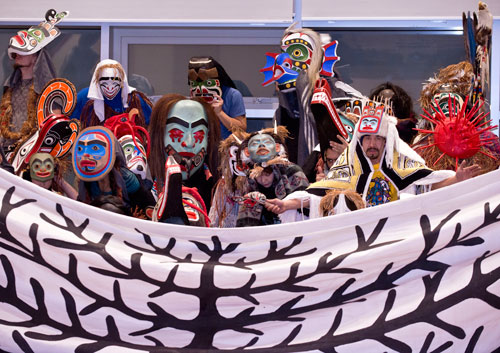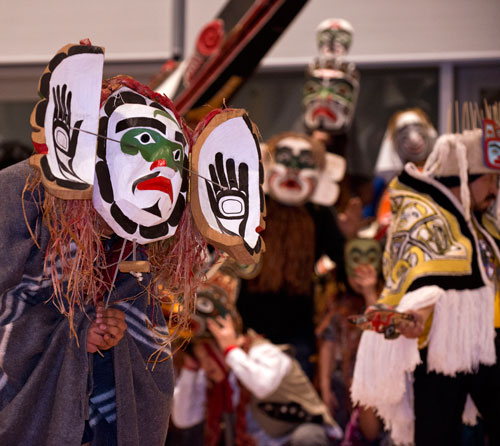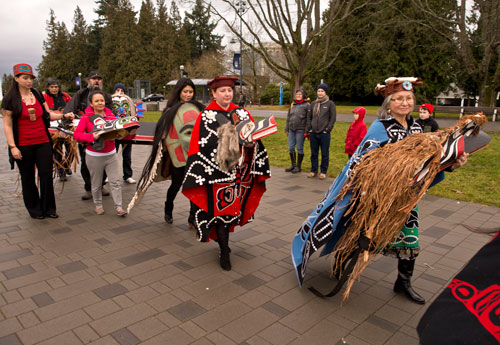A Sneak Peek at Pages from
In Our Hands: The Keepers of the Box of Treasures
As we finish the preparation of the book
In Our Hands: The Keepers of the Box of Treasures
we will be sending out updates to supporters and posting a few of the pages (below).
Enjoy! Please let us know what you think by contacting us.
In Our Hands: The Keepers of the Box of Treasures
we will be sending out updates to supporters and posting a few of the pages (below).
Enjoy! Please let us know what you think by contacting us.
2024 is going to be a great year for our book project!
The following letter was sent to our supporters on January 14, 2024
Hello Friends, Supporters and Fellow Paddlers,
We have very good news and very sad news.
First the very good news! The long-awaited publishing of In Our Hands: The Keepers of the Box of Treasures will soon be more than wishful thoughts we send to you on a regular basis. This year the book will be published!
November 2024 (exact date to be determined) we will be in Alert Bay, British Columbia at the U'Mista Cultural Center to celebrate the grand opening of an exhibit of In Our Hand's portraits and pages. The book will act as the exhibit catalogue as well as a stand-alone book.
It is with great sadness we send you news of the death of T̓łaḵwagila, Chief Bill Cranmer of Alert Bay.
This is an immeasurable loss to the Alert Bay community and to all those who recognize the importance of indigenous language and culture.
To read more about his public persona, please visit the following links:
https://www.cbc.ca/news/canada/british-columbia/bill-cranmer-obit-1.7076468
For us, Dos Polacas, Chief Bill was our friend and supporter.
Chief Bill worked with Andrea Sanborn at the U'Mista Cultural Center in 1999 at the Reopening of the Big House. They designated Sharon as the primary photographer for the huge event. Alert Bay was the first to build a community Big House after the ban on potlatching was lifted in 1951. In 1997, that house burned down. In 1999, the community celebrated the ReOpening of the Big House on the same land.
Hello Friends, Supporters and Fellow Paddlers,
We have very good news and very sad news.
First the very good news! The long-awaited publishing of In Our Hands: The Keepers of the Box of Treasures will soon be more than wishful thoughts we send to you on a regular basis. This year the book will be published!
November 2024 (exact date to be determined) we will be in Alert Bay, British Columbia at the U'Mista Cultural Center to celebrate the grand opening of an exhibit of In Our Hand's portraits and pages. The book will act as the exhibit catalogue as well as a stand-alone book.
It is with great sadness we send you news of the death of T̓łaḵwagila, Chief Bill Cranmer of Alert Bay.
This is an immeasurable loss to the Alert Bay community and to all those who recognize the importance of indigenous language and culture.
To read more about his public persona, please visit the following links:
https://www.cbc.ca/news/canada/british-columbia/bill-cranmer-obit-1.7076468
For us, Dos Polacas, Chief Bill was our friend and supporter.
Chief Bill worked with Andrea Sanborn at the U'Mista Cultural Center in 1999 at the Reopening of the Big House. They designated Sharon as the primary photographer for the huge event. Alert Bay was the first to build a community Big House after the ban on potlatching was lifted in 1951. In 1997, that house burned down. In 1999, the community celebrated the ReOpening of the Big House on the same land.
|
|
Throughout the years, Chief Bill handled situations with a calm and diplomatic hand. His sense of humor and the constant twinkle in his eye lightened up the room. He encouraged community members to work with us on this book project and spoke up at the U'Mista and elsewhere for the book to be published. His deep connection to his culture encouraged us to be true to everyone we photographed and interviewed. Working in indigenous communities can be fraught with long-held fears, prejudices and suspicions, stemming from centuries of abuse. We were blessed with the far-seeing eyes of Chief Bill. He envisioned how this book would broadcast stories of the Kwakwaka'wakw people, helping create a bridge between elders and future generations. Chief Bill epitomized just such a bridge.
Here is the interview from our book with Chief Bill Cranmer:
The main responsibility today of a chief to his people is to keep your history alive.
I guess I was fortunate to be able to see some of the potlatches when I was just little in the remote villages. And as I say I was always interested in our history, and that had a lot to do with how our family was and our extended family. There was still potlatching from my mother's side and also from her connections with the Kwalgiulth in Fort Rupert. They were still potlatching even though in secret right up until the first official public potlatch, held by Mungo Martin in Thunderbird Park in Victoria in 1953. I was 15 years old, and joined my dad and my brother and some of the chiefs from northern Vancouver Island that went to Victoria to attend that potlatch. The prohibition to potlatch was not lifted until 1951. I used to come back every opportunity to attend potlatches in the late 60's, 70's. Then my great uncle saw that I was interested in the potlatches so he said to the old people at the time that he wanted to pass on his name to me. At that first potlatch he said, you have to get up now and say something and of course I'd never done that. He said it doesn't have to be long, just as long you get up to say something. So I got up and said something very short. So that was the start, and then I got better and better and spoke more and more so now I act as master of ceremonies, speaker at the potlatches. Mungo Martin invited the people that were really knowledgeable about potlatches - people from Blunden Harbour, people from Fort Rupert, my dad, Dan Cranmer was invited to be master of ceremonies because he was quite comfortable in English and Kwalwala. We took part in some of the dances. We performed the animal kingdom there. When our family had the memorial potlatch for my dad, my oldest brother Doug took over my father's name. We were quite involved in the planning of that potlatch. That was when I first initiated as a hamatsa. And so from there I always took the opportunity to sit in when the old people were planning the potlatches. Before potlatch the old people would get together and talk about what the host wanted to do. They would come to an agreement - Yeah, this was proper to do. And if it wasn't proper, they would also say that. The main responsibility today of a chief to his people is to keep your history alive. Insure that the names you have are passed from generation to generation, the dances are passed on from the older to the younger, the songs that go with dances, the names that go with those dances. That's how we pass on our history. In the late 40's the Department of Indian Affairs started saying we don't want the hereditary chiefs to be in charge. We want them to go into the elected system. So that's what happened. They started going to a vote and the elected system. Now the elected chief works with the other elected council members to look after the interest of your members in everything from economic development to education to your children's health care. In the earlier days the hereditary chiefs would have been responsible for making sure that was happening. Today when we have our ceremonies, you have your family, your extended family and your friends whether they be in the immediate village or some other village. They all get together and help you when you're planning. That's one really good thing about our people - they all just seem to get together.
I think the elders expect me as a hereditary chief to work hard to try to keep our history alive, to keep our language alive.
So, dear Supporters, with your help, we are working to live up to the confidence Chief Bill Cranmer had in us. Thank you for supporting the links in the human network this book project represents.
All our best, Sharon and Pamela
The main responsibility today of a chief to his people is to keep your history alive.
I guess I was fortunate to be able to see some of the potlatches when I was just little in the remote villages. And as I say I was always interested in our history, and that had a lot to do with how our family was and our extended family. There was still potlatching from my mother's side and also from her connections with the Kwalgiulth in Fort Rupert. They were still potlatching even though in secret right up until the first official public potlatch, held by Mungo Martin in Thunderbird Park in Victoria in 1953. I was 15 years old, and joined my dad and my brother and some of the chiefs from northern Vancouver Island that went to Victoria to attend that potlatch. The prohibition to potlatch was not lifted until 1951. I used to come back every opportunity to attend potlatches in the late 60's, 70's. Then my great uncle saw that I was interested in the potlatches so he said to the old people at the time that he wanted to pass on his name to me. At that first potlatch he said, you have to get up now and say something and of course I'd never done that. He said it doesn't have to be long, just as long you get up to say something. So I got up and said something very short. So that was the start, and then I got better and better and spoke more and more so now I act as master of ceremonies, speaker at the potlatches. Mungo Martin invited the people that were really knowledgeable about potlatches - people from Blunden Harbour, people from Fort Rupert, my dad, Dan Cranmer was invited to be master of ceremonies because he was quite comfortable in English and Kwalwala. We took part in some of the dances. We performed the animal kingdom there. When our family had the memorial potlatch for my dad, my oldest brother Doug took over my father's name. We were quite involved in the planning of that potlatch. That was when I first initiated as a hamatsa. And so from there I always took the opportunity to sit in when the old people were planning the potlatches. Before potlatch the old people would get together and talk about what the host wanted to do. They would come to an agreement - Yeah, this was proper to do. And if it wasn't proper, they would also say that. The main responsibility today of a chief to his people is to keep your history alive. Insure that the names you have are passed from generation to generation, the dances are passed on from the older to the younger, the songs that go with dances, the names that go with those dances. That's how we pass on our history. In the late 40's the Department of Indian Affairs started saying we don't want the hereditary chiefs to be in charge. We want them to go into the elected system. So that's what happened. They started going to a vote and the elected system. Now the elected chief works with the other elected council members to look after the interest of your members in everything from economic development to education to your children's health care. In the earlier days the hereditary chiefs would have been responsible for making sure that was happening. Today when we have our ceremonies, you have your family, your extended family and your friends whether they be in the immediate village or some other village. They all get together and help you when you're planning. That's one really good thing about our people - they all just seem to get together.
I think the elders expect me as a hereditary chief to work hard to try to keep our history alive, to keep our language alive.
So, dear Supporters, with your help, we are working to live up to the confidence Chief Bill Cranmer had in us. Thank you for supporting the links in the human network this book project represents.
All our best, Sharon and Pamela
The following letter was sent to supporters on September 26, 2022.
Hello Friends, Supporters and Fellow Paddlers,
We returned to Alert Bay in April 2022 but things were topsy turvy. We accomplished more than we thought we would in Port Hardy with the help of Richard George, our liaison with the Kwakwaka’wakw elders there. On the other hand, many of the people we had assumed we could meet with in Alert Bay were unavailable due to various complications from COVID: some were sick, others had family members in quarantine and still others were reticent to meet with anyone outside the community. Through all of this, like every time we visit, we continued to receive a lot of encouragement and great affection for our project. We enjoyed a lot of laughter with whoever we met as we basked in a feeling of homecoming.
Homecoming celebrations happen on a regular basis, right? Once again, we are headed up to Canada, crossing the border at the end of March 2023 to spend a week tying up loose ends and meeting with the individuals and/or the families of those involved in In Our Hands: The Keepers of the Box of Treasures. Their enormous generosity in allowing us, as non-natives, to bear witness to their stories deepens the understanding on both sides of the cultural bridge. We have a solemn responsibility to them and their families. When we enter Alert Bay, on our 3rd ferry boat of the day, we will be prepared. Prepared to not be always in control of the following seven days. Sometimes stuff just happens! Prepared to listen to concerns, questions, and more stories. Prepared to be joyful, reverent and productive. Prepared to be a part of the Alert Bay community.
The following update is from the page of one of the Beans family: Herman Beans. Although Herman had passed by the time we wanted to interview him, his brother Stevie and sister-in-law Stella filled in the details. We laughed so much talking with them. One of our dreams is to go with Stevie and Stella to “grease camp” to harvest t’lina or eulachan oil.
Hello Friends, Supporters and Fellow Paddlers,
We returned to Alert Bay in April 2022 but things were topsy turvy. We accomplished more than we thought we would in Port Hardy with the help of Richard George, our liaison with the Kwakwaka’wakw elders there. On the other hand, many of the people we had assumed we could meet with in Alert Bay were unavailable due to various complications from COVID: some were sick, others had family members in quarantine and still others were reticent to meet with anyone outside the community. Through all of this, like every time we visit, we continued to receive a lot of encouragement and great affection for our project. We enjoyed a lot of laughter with whoever we met as we basked in a feeling of homecoming.
Homecoming celebrations happen on a regular basis, right? Once again, we are headed up to Canada, crossing the border at the end of March 2023 to spend a week tying up loose ends and meeting with the individuals and/or the families of those involved in In Our Hands: The Keepers of the Box of Treasures. Their enormous generosity in allowing us, as non-natives, to bear witness to their stories deepens the understanding on both sides of the cultural bridge. We have a solemn responsibility to them and their families. When we enter Alert Bay, on our 3rd ferry boat of the day, we will be prepared. Prepared to not be always in control of the following seven days. Sometimes stuff just happens! Prepared to listen to concerns, questions, and more stories. Prepared to be joyful, reverent and productive. Prepared to be a part of the Alert Bay community.
The following update is from the page of one of the Beans family: Herman Beans. Although Herman had passed by the time we wanted to interview him, his brother Stevie and sister-in-law Stella filled in the details. We laughed so much talking with them. One of our dreams is to go with Stevie and Stella to “grease camp” to harvest t’lina or eulachan oil.
Herman Beans
"This is the only thing left where we don’t need a piece of paper"
Stevie Beans, Herman Beans’ brother: I told Andrea [Sanborn] as long as you pay Herman you can use the mill for the lumber that goes to the Big House. The last big project Herman’s mill did was that board walk along the shore. Herman would cut lots of firewood. He was a fisherman, but he went against the grain in every company he fished for. He was kind of a stubborn one. [laughter] He was 83 when he passed away.
Stella Beans: Yes, he would walk down to the wood [to the mill] until he couldn’t do it anymore.
Stevie: He was a playboy [laughter] He was a playboy and he loved to do his wood. We were all uncomfortable in that Long House. My dad always told us it was no good for you. Don’t do it. Don’t go in there. Don’t do it. That was us. Then they lifted the ban on potlatching and he was the first one to start it and he expected us to embrace it! To this day we can’t feel comfortable in there. When my mom started to do memorials and all that kind of stuff, my brother Herm would be helping get everything ready. Then he would be on the first ferry the next morning when it was time to go to the potlatch. He’d take off. Left me standing there. [laughter] That’s how I ended up doing it. He’d have nothing to do with it.
Stella: That was your mom, Stevie. Yes, Stevie was in regalia, too.
Stevie: I stood there for my mom. My brother wasn’t there. The old people said it might as well be me. We can’t depend on Herman. That is how I ended up being the chief. It was supposed to be him. That’s how I ended up in the video Barb [Cranmer] made, too. Herman was supposed to it. He said “I’ll be back.” Then he went to get t’lina [eulachon oil or “grease”]. He was just looking the other way, going down the river. I said “Shoot, I guess I can do it.” That’s how I ended up in those videos!
Stella: Herman always had some ladies riding around with him. [laughter]
Stevie: You make the caption on the photo with the chain saw, “This is his toy.” [laughter] The last time he went up Knight’s Inlet, he was right pissed off because we went and cut wood and he said, “That’s my job!” He was pouting all day. “They left me behind and that’s my job!” They didn’t want him to go up because he was sick. I remember one Christmas we were all having dinner and he said to me, “My hands are shaking, I want to cut wood.” He’d rather be cutting wood than having dinner. [laughter] He jogged every morning, all the way into his eighties.
Stevie: Herman would go to Dzawadi (Knight's Inlet) every year to make t’lina. He loved Dzawadi for the river, the mountains, the family time and the peace and pure air. He was concerned about losing our rights to Knight's Inlet.
Herman always said "We have to keep this sacred. This is the only thing we have left where we don't need a piece of paper".
Stella Beans: Yes, he would walk down to the wood [to the mill] until he couldn’t do it anymore.
Stevie: He was a playboy [laughter] He was a playboy and he loved to do his wood. We were all uncomfortable in that Long House. My dad always told us it was no good for you. Don’t do it. Don’t go in there. Don’t do it. That was us. Then they lifted the ban on potlatching and he was the first one to start it and he expected us to embrace it! To this day we can’t feel comfortable in there. When my mom started to do memorials and all that kind of stuff, my brother Herm would be helping get everything ready. Then he would be on the first ferry the next morning when it was time to go to the potlatch. He’d take off. Left me standing there. [laughter] That’s how I ended up doing it. He’d have nothing to do with it.
Stella: That was your mom, Stevie. Yes, Stevie was in regalia, too.
Stevie: I stood there for my mom. My brother wasn’t there. The old people said it might as well be me. We can’t depend on Herman. That is how I ended up being the chief. It was supposed to be him. That’s how I ended up in the video Barb [Cranmer] made, too. Herman was supposed to it. He said “I’ll be back.” Then he went to get t’lina [eulachon oil or “grease”]. He was just looking the other way, going down the river. I said “Shoot, I guess I can do it.” That’s how I ended up in those videos!
Stella: Herman always had some ladies riding around with him. [laughter]
Stevie: You make the caption on the photo with the chain saw, “This is his toy.” [laughter] The last time he went up Knight’s Inlet, he was right pissed off because we went and cut wood and he said, “That’s my job!” He was pouting all day. “They left me behind and that’s my job!” They didn’t want him to go up because he was sick. I remember one Christmas we were all having dinner and he said to me, “My hands are shaking, I want to cut wood.” He’d rather be cutting wood than having dinner. [laughter] He jogged every morning, all the way into his eighties.
Stevie: Herman would go to Dzawadi (Knight's Inlet) every year to make t’lina. He loved Dzawadi for the river, the mountains, the family time and the peace and pure air. He was concerned about losing our rights to Knight's Inlet.
Herman always said "We have to keep this sacred. This is the only thing we have left where we don't need a piece of paper".
Norman and Helen Glendale
"Let the people know how proud we are of the kids
and how good they are."
Norman Glendale: My role is to speak on behalf of the group, to welcome everyone and thank our elders before us for hanging on to what we have. Even there were dark times when the government banned us from potlatching for those years. Let the people know of how proud we are of the kids, and how good they are. To teach them respect and give them respect. Like what was given to us by our parents. Taught to us by our parents. It gives us something to do, to teach our kids about our culture and try to keep our language alive. I am fluent [in Kwawala] but I’m still learning. I learn new words. We’ll get a few people together, some from out of town, like the ones that teach at the Fort Rupert, some from Port Hardy. We have a good time doing it. Enjoy one another’s company. The people that speak Kwakwala are the Kwagiulth, people from Fort Rupert. The rest of the tribes, we call them bakum-kwala. I was asked if I was raised by an elder because I spoke our language and I said yeah, speaking our language, Kwakwala. They said, We don’t Kwakwala, we bakum’wala because we are bakum. Only the Kwagiulth kwakwala. I grew up on New Vancouver in the village before coming to the Residential School. I miss it. There were times that I’d go in the rowboat and rowed across to Village Island to go visit my brother Art Dick Jr. Took me about 15 minutes. Just next door neighbors. And then Turnour and Gilford Island over the other way. And Kingcome way up there. We would visit one another at night. They’d have a gas lamp. We’d have tea and toast or whatever. Good memories. My late mother had a raspberry patch. She’d make jam and huckleberries and salmon berries and salal, whatever she could get a hold of, she’d make jam and prepare for the winter. Jarred fish and smoked fish and preserve it. Mostly salmon. If we got some clams, she’d preserve clams, too. People hunt deer during the winter months. We used to walk the logging roads. We just packed the deer home because we didn’t have any wheels back then. There was a little farm on the backside of the village for apples and things like that. There used to be a guy that lived there for a while. I can’t remember his name. There was a creek there for fish out back. We used to go what we used to call creek-robbing at night. We’d bring home what-
ever fish we could find, smoke it. We’d come out every two weeks, take the thing, get a little bit of groceries and go back. We didn’t have much groceries but we survived. I was logging for 33 years. Over in Beaver Cove. Just across here on the island by Telegraph Cove. 33 years on the water, running those side-winders, dozer-boats. We used to sing with a group but it kind of faded out. With William, Wah. The kwakwadah group.
Helen Glendale: Our house would be just packed when we would have singing nights with William, with Wah. People on stairs and chairs all everywhere. They loved coming here because I had snacks every night. [laughter] I thought when it first started that I was going to be the first place and then we’d move onto the next home and keep going. We never moved from here. [laughter]
Norman: We enjoyed having people here. It was fun.
Helen: All ages. Even the little kids. Specially if there was potlatches coming up – they’d all come and practice the songs of that family that they have.
Norman: We heard different songs and see different dances from different people that have potlatches. Things we’ve never seen before.
Helen: We should have more language for our kids while they’re young.
Norman: We did that book – Love You Forever. It took us a while to do it but we had fun doing it.
ever fish we could find, smoke it. We’d come out every two weeks, take the thing, get a little bit of groceries and go back. We didn’t have much groceries but we survived. I was logging for 33 years. Over in Beaver Cove. Just across here on the island by Telegraph Cove. 33 years on the water, running those side-winders, dozer-boats. We used to sing with a group but it kind of faded out. With William, Wah. The kwakwadah group.
Helen Glendale: Our house would be just packed when we would have singing nights with William, with Wah. People on stairs and chairs all everywhere. They loved coming here because I had snacks every night. [laughter] I thought when it first started that I was going to be the first place and then we’d move onto the next home and keep going. We never moved from here. [laughter]
Norman: We enjoyed having people here. It was fun.
Helen: All ages. Even the little kids. Specially if there was potlatches coming up – they’d all come and practice the songs of that family that they have.
Norman: We heard different songs and see different dances from different people that have potlatches. Things we’ve never seen before.
Helen: We should have more language for our kids while they’re young.
Norman: We did that book – Love You Forever. It took us a while to do it but we had fun doing it.
Living Cultures: Beyond the Frame
The last year and a half has been an extraordinary experience as an artist and a photographer welcomed into the world of Indigenous communities. I have traveled the length of the Northwest Coast from Alaska to the San Juan Islands, photographing in preparation for my participation in the Beyond the Frame project sponsored by the Seattle Public Library. This project includes two shows: one of color images and a second that includes 15 original Edward S. Curtis Photogravures from one of the original volumes of Curtis’ magnum opus: The North American Indian.
The shows also include Indigenous Regalia from the entire coast. Both shows are taken from 20 years of my photographic work,
revisiting Curtis images and traveling the Northwest coast camera in hand.
The color show opened on January 13, 2018.
The black and white show opened to the public on February 23rd.
On February 28th there was a reception.
I also spoke at a special event on the evening of February 28th.
Initially the project was to celebrate the 150th anniversary of the birth of Edward S. Curtis. Early on, though, the project became and continues to be a celebration of the Native Living Cultures of the Northwest Coast. Curtis photographed the Indigenous peoples of North America in the early 1900’s when he and most white people thought these cultures were disappearing.
My goal became, and continues to be, to show these cultures as vibrant, alive and very important communities of the Northwest Coast of North America. I have been honored to visually document the evolving and growing world of Northwest Coast Indigenous peoples who continue to celebrate their home at the edge of the sea.
Photographer Sharon Eva Grainger
The shows also include Indigenous Regalia from the entire coast. Both shows are taken from 20 years of my photographic work,
revisiting Curtis images and traveling the Northwest coast camera in hand.
The color show opened on January 13, 2018.
The black and white show opened to the public on February 23rd.
On February 28th there was a reception.
I also spoke at a special event on the evening of February 28th.
Initially the project was to celebrate the 150th anniversary of the birth of Edward S. Curtis. Early on, though, the project became and continues to be a celebration of the Native Living Cultures of the Northwest Coast. Curtis photographed the Indigenous peoples of North America in the early 1900’s when he and most white people thought these cultures were disappearing.
My goal became, and continues to be, to show these cultures as vibrant, alive and very important communities of the Northwest Coast of North America. I have been honored to visually document the evolving and growing world of Northwest Coast Indigenous peoples who continue to celebrate their home at the edge of the sea.
Photographer Sharon Eva Grainger
Dos Polacas is pleased to announce a spectacular exhibit of the First Nations people of the Pacific Northwest
at the Seattle Public Library from January 13th to April 30th, 2018.
Comprised of photography by Dos Polacas' own Sharon Eva Grainger,
the exhibit also displays magnificent regalia from four living cultures of our region.
Here is the formal announcement:
at the Seattle Public Library from January 13th to April 30th, 2018.
Comprised of photography by Dos Polacas' own Sharon Eva Grainger,
the exhibit also displays magnificent regalia from four living cultures of our region.
Here is the formal announcement:
The Living Cultures of the Northwest Coast
"In the spirit of Great Tribal Honor, your name has been called to come forth and witness,
hear and feel the Living Cultures of the Northwest Coast
as depicted by the tribally appointed photographer, Sharon Eva Grainger.
Four Nations' voices will be heard.
They are, from North to South,
the Tlingit,
Haida,
Kwakwaka'wakw
and Lummi."
-- Jim Thomas and Sharon Eva Grainger
"Living Cultures"
Photographs by Sharon Eva Grainger
Seattle Public Central Library, 1000 Fourth Avenue, Seattle, WA 98104
Saturday, January 13, 2018 to Monday April 30, 2018
Free Admission
Central Library
1000 Fourth Ave.
Seattle, WA 98104
hear and feel the Living Cultures of the Northwest Coast
as depicted by the tribally appointed photographer, Sharon Eva Grainger.
Four Nations' voices will be heard.
They are, from North to South,
the Tlingit,
Haida,
Kwakwaka'wakw
and Lummi."
-- Jim Thomas and Sharon Eva Grainger
"Living Cultures"
Photographs by Sharon Eva Grainger
Seattle Public Central Library, 1000 Fourth Avenue, Seattle, WA 98104
Saturday, January 13, 2018 to Monday April 30, 2018
Free Admission
Central Library
1000 Fourth Ave.
Seattle, WA 98104
Moving Ahead with
"In Our Hands: The Keepers of the Box of Treasures"
From May 25th to June 10th and again from December 6th to December 9th, Sharon and Pamela are back in Alert Bay, British Columbia adding to our images of the older members of the Kwakwaka'wakw community, recording their stories and memories, seeing old friends and making new ones. In May, we were also very lucky to accompany some of our youngest friends in kindergarten on a day-long excursion to nearby Hanson Island to visit the island refuge created by one of the founders of Greenpeace 30 years ago. Click here for images of the field trip. During the following days one part of their kindergarten classroom was devoted to creating cedar bracelets to give away as gifts during their upcoming cultural celebration. Click here for more.
|
|
You are listening to a native speaker of Kwak'wala saying their word for Thank you. Click the play button to hear it again. We thank www.firstvoices.com for this recording.
|
Gilakas'la! Thank you! Gilakas'la!
|
We are grateful for our 102 backers from around the world who given the financial support to make this important book project possible!
We thank everyone in Alert Bay, British Columbia who has given us permission to use their portraits and words in our book "In Our Hands: The Keepers of the Box of Treasures." We are so grateful to the families who have given us permission to use the photographs and words of their grannies and grandfathers, aunties and uncles to fill this book with memories, reflections and stories. Many people have given us great advice, helped us out in so many ways small and large, spread the word to their networks and provided us with a community that has made this book possible. We would especially like to thank Headman Jim Thomas “kHatsati” – “The Great One”, “Shaa Ye Gun” – “Keeper of the Mountain” for encouraging us, standing up and speaking in support of our project at many gatherings. Now we turn to our work: creating more portraits of faces and hands, recording more interviews, especially stories in Kwak'wala. We will be organizing it all into a book for publication. We will have updates here on our website on a regular basis. If you have pledged, there will be a special section on the Kickstarter website, Spotlight, devoted to our progress. Within two to three weeks, you will receive more information on that. |
We have surpassed $25,000 !
We are now officially stamped as Successful Kickstarter Creators and the future published authors of “In Our Hands: The Keepers of the Box of Treasures.” We are immensely grateful for all the support and trust we have received. We are looking forward to spending our time immersed in portraits and interviews in the Kwakwaka’wakw community.
Our event on March 18th was a resounding success!
|
It was thrilling to have everyone there in Seattle's Smith Tower! Close to 100 people were online or were there in person. We listened raptly as Headman Jim Thomas told us about why the word for the leaders of the Tlingit is Headman and not Chief, the difference between big and little and how little birds and big bears can inform us about our personal interactions.
|
|
|
The speaker in this 1st video interview is Patricia "Trish" Nolie, a member of the Kwakwaka'wakw Nation, a Hamatsa and someone who feels strongly about this subject and her family. Here is the 2-minute version of her response to the question "What does the Box of Treasures mean to you?" For the 7-minute version, please click HERE.
|
But wait!
What does the phrase 'Box of Treasures' in the title of our book actually mean?
It turns out that it means something different to different people.
We were lucky enough to have seven people in Alert Bay, a First Nations community of British Columbia, respond to our question
"What does the Box of Treasures mean to you?"
Our respondents ranged in ages from 14 years old up to 83 years old with a broad range of backgrounds.
Click Dos Polacas' video series to see the wonderful responses to this fascinating and personal question.
What does the phrase 'Box of Treasures' in the title of our book actually mean?
It turns out that it means something different to different people.
We were lucky enough to have seven people in Alert Bay, a First Nations community of British Columbia, respond to our question
"What does the Box of Treasures mean to you?"
Our respondents ranged in ages from 14 years old up to 83 years old with a broad range of backgrounds.
Click Dos Polacas' video series to see the wonderful responses to this fascinating and personal question.
2016 Reconciliation Pole:
Copper Nails
Over the last few months, while the Reconciliation Pole has been at the Museum of Anthropology at the University of British Columbia in Vancouver B.C., there has been a steady flow of visitors and especially First Nation school groups from around the area.
Click here to read more about this remarkable inter-generational making of history.
Click here to read more about this remarkable inter-generational making of history.
2016 Reconciliation Pole:
A Journey Forward of Understanding, Truth and Respect
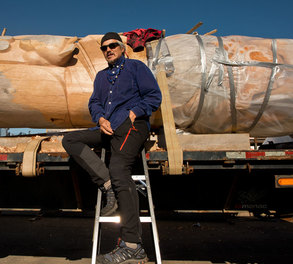 James Hart at work on the Reconciliation Pole
James Hart at work on the Reconciliation Pole
Since 2014, James Hart, the renowned Haida artist from Haida Gwaii, his family and fellow Haida carvers have been carving an 800-year-old cedar tree. Their hands are transforming this red cedar into the story of reconciliation as an act of healing from the deep wounds caused by the indigenous Residential School system.
Click here to read Sharon's account of the last three years as she has watched the Reconciliation Pole take shape.
Click here to see a video-slideshow of an interview with James Hart and a celebration of the Reconciliation Pole's arrival at the Museum of Anthropology in Vancouver, British Columbia.
Please join us to witness the ongoing story of the indigenous people carving their past, present and future into the Reconciliation Pole.
Click here to read Sharon's account of the last three years as she has watched the Reconciliation Pole take shape.
Click here to see a video-slideshow of an interview with James Hart and a celebration of the Reconciliation Pole's arrival at the Museum of Anthropology in Vancouver, British Columbia.
Please join us to witness the ongoing story of the indigenous people carving their past, present and future into the Reconciliation Pole.
August 25, 2016, Indigenous Peoples honor
the environment and its creatures by joining in the celebration of
the 100th Anniversary of the National Park Service #nationalparkservice
Digital technology broadcast the 100th anniversary celebrations of the National Park Service involving First Nations people. Live streaming of events, Twitter hashtags, regular blasts on Facebook, and posts are everywhere, whether it’s images, music or speeches from events. We, Dos Polacas, have noticed a change over the last few years: native communities are handling this technology rather than being handled by it.
Technology, whether it is 19th century radio or 21st century internet, has been a tool to assimilate indigenous communities. Assimilation reads as colonization: attempting to erase the native culture institutionally, socially, economically through a systemic obliteration of the structures holding native communities together. The accumulated result has been disastrous: an overwhelming perception of poverty, neglect, depersonalization and powerlessness within native communities.
In 2016 we have witnessed the explosive growth of indigenous use of digital technology and a strong native presence on social media.
Technologies, once used to assimilate, dilute and weaken indigenous cultures around the world, are now being by natives in their struggles to protect the environment, safeguard their way of life and celebrate the resilience of their peoples.
The result has been some changes in laws, policies and perceptions. And maybe even more reverence and protection for Mother Earth but we’ll just have to wait and see.
Technology, whether it is 19th century radio or 21st century internet, has been a tool to assimilate indigenous communities. Assimilation reads as colonization: attempting to erase the native culture institutionally, socially, economically through a systemic obliteration of the structures holding native communities together. The accumulated result has been disastrous: an overwhelming perception of poverty, neglect, depersonalization and powerlessness within native communities.
In 2016 we have witnessed the explosive growth of indigenous use of digital technology and a strong native presence on social media.
Technologies, once used to assimilate, dilute and weaken indigenous cultures around the world, are now being by natives in their struggles to protect the environment, safeguard their way of life and celebrate the resilience of their peoples.
The result has been some changes in laws, policies and perceptions. And maybe even more reverence and protection for Mother Earth but we’ll just have to wait and see.
VIDEO: Welcoming the Canoe Families to Nisqually
A thrilling beginning to days and days of ceremony, singing and dancing.
While Dos Polacas were unable to be there for the entire week, we are so thankful we were there when the canoes arrived!
While Dos Polacas were unable to be there for the entire week, we are so thankful we were there when the canoes arrived!
August 2016: Dos Polacas Attend & Document
2016 Paddle to Nisqually
Canoe Journey
A canoe journey is a weaving that every year unravels and is re-woven again for warmth, protection and healing.
In the spring paddlers gather to ready themselves, their canoes and their hearts for the journey.
The older generation looks on, remembering their own journeys across the waters of the Pacific Northwest, down rivers and up coasts.
Excited children run back and forth waiting for their time to take up the paddle.
The paddlers feel the energy gathering.
In the spring paddlers gather to ready themselves, their canoes and their hearts for the journey.
The older generation looks on, remembering their own journeys across the waters of the Pacific Northwest, down rivers and up coasts.
Excited children run back and forth waiting for their time to take up the paddle.
The paddlers feel the energy gathering.
For a more complete recounting of this memorable event, click HERE.
Sights and sounds, ancient and modern, songs and carvings, all reflect the resilience and beauty of this indigenous culture stretching coast to coast and north and south.
Sights and sounds, ancient and modern, songs and carvings, all reflect the resilience and beauty of this indigenous culture stretching coast to coast and north and south.
June 2016: Dos Polacas Visit Alert Bay for
the Salmon Pageant, June Sports and a Feast!
Alert Bay - June Pageantry We are so fortunate to have made the wonderful connections we have over the last 18 years in Alert Bay. This community continues to be a source of joy, laughter, knowledge and deepening friendships.
In June 2016 we brought a slideshow of the elders' portraits from our book project "In the Hands of Our Elders" to the U'Mista Cultural Center in Alert Bay to let the community see what we were doing.
It was June Sports Weekend and full of soccer and community events including
In June 2016 we brought a slideshow of the elders' portraits from our book project "In the Hands of Our Elders" to the U'Mista Cultural Center in Alert Bay to let the community see what we were doing.
It was June Sports Weekend and full of soccer and community events including
- the Salmon pageant to choose the Salmon Prince and Princess
- a fantastic and supernatural parade marking the opening of June Sports
- a feast celebrating the graduation of several members of the Dawson family to which we were invited to photograph and record
All weekend the eagles serenaded us (as only eagles can), the ravens urged us forward and the serendipities multiplied. We came home exhausted and happy, full of experiences reinforcing our "In the Hands of Our Elders" book project!
Dos Polacas found themselves in Vancouver, British Columbia on April 2016 in the presence of two chiefs,
one Tlingit and one Kwakwaka'wakw.
Jim Thomas, Tlingit, and Beau Dick, Kwakwaka'wakw, were telling stories and teasing us,
finding out they had family ties in common and glorying in a new friendship.
Sharon took photographs and Pamela recorded the stories while Zenia Pakker-Kozicki was there to video it all.
Click HERE and HERE to check out two of the stories from this magical gathering!
one Tlingit and one Kwakwaka'wakw.
Jim Thomas, Tlingit, and Beau Dick, Kwakwaka'wakw, were telling stories and teasing us,
finding out they had family ties in common and glorying in a new friendship.
Sharon took photographs and Pamela recorded the stories while Zenia Pakker-Kozicki was there to video it all.
Click HERE and HERE to check out two of the stories from this magical gathering!
"In the Hands of Our Elders"
|
Uses Sharon Eva Grainger's portraits of Elders to celebrate the Elders' resilience, through their stories,
ceremonies and language. Intersperses Elders' portraits with stories, told in the elders' own words, recorded and transcribed by Pamela Pakker-Kozicki. The Elders' strength is creating a path to a future where children, grand-children and great grand-children will derive their own resiliency from the legacy offered by today's Elders and from the grounding their culture gives them. |
We are very grateful for their support. |
The October 2016 Kickstarter funds will go to
The book will contain:
|
In March 2016, 137 people pledged to get "In the Hands of Our Elders" published.
Thank you to everyone who pledged!
We missed our target but we will be coming back in October 2016 with another Kickstarter campaign.
We learned so much we cannot begin to tell you.
We have been evaluating our March 2016 Kickstarter.
Changes in our October 2016 Kickstarter and In the Hands of Our Elders book project:
==> involving people from different international organizations, as well as indigenous people,
==> tweaking reward levels to make our project and the In the Hands of Our Elders book more accessible to more people
Thank you to everyone who pledged!
We missed our target but we will be coming back in October 2016 with another Kickstarter campaign.
We learned so much we cannot begin to tell you.
We have been evaluating our March 2016 Kickstarter.
Changes in our October 2016 Kickstarter and In the Hands of Our Elders book project:
==> involving people from different international organizations, as well as indigenous people,
==> tweaking reward levels to make our project and the In the Hands of Our Elders book more accessible to more people
Here (below) is a video of Darrell Hillaire, Lummi Nation, Director of the Lummi Youth Academy,
speaking, as only he can, in support of this ground-breaking book project.
speaking, as only he can, in support of this ground-breaking book project.
Our Kickstarter Launch event, held Sunday Feb 21, 2016 on the 29th Floor of the Historic Smith Tower, in the offices of Tahzoo,
gathered supporters together from all over.
Here (below)is an excerpt what Chief Jim Thomas, Tlingit, said
in support of Dos Polacas' book project "In the Hands of Our Elders."
If you were there, you can relive it! If you weren't, you can enjoy a 5-minute snippet of what we heard and felt.
gathered supporters together from all over.
Here (below)is an excerpt what Chief Jim Thomas, Tlingit, said
in support of Dos Polacas' book project "In the Hands of Our Elders."
If you were there, you can relive it! If you weren't, you can enjoy a 5-minute snippet of what we heard and felt.
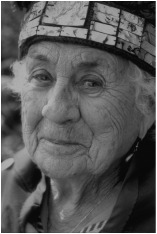 The twinkling eyes of Auntie Ethel,
Alert Bay, British Columbia The twinkling eyes of Auntie Ethel,
Alert Bay, British Columbia
The Feb and March 2016 Kickstarter Campaign's goal was to raise money to finish and publish the book "In the Hands of Our Elders." Even though we fell short, we learned a lot.
So stay tuned for our next Kickstarter in October 2016. After all, you don't want the Bukwus to come find you, do you? |
January 15th and 16th 2016
Lalakenis/All Directions: A Journey of Truth and Unity
January 16th 2016 was a "grey on grey day with shades of dark green." A mix of low-hanging clouds and rain. In other words, a perfect January day in the Pacific Northwest. First Nations people were gathering, preparing for the Procession to inaugurate the official opening of Vancouver UBC's Belkin Gallery exhibit "Lalakenis/All Directions: A Journey of Truth and Unity."
It celebrates the 4,500 km path traveled by Chief Beau Dick, Chief Giindajin Haawasti Guujaaw of the Haida Nation and 21 others to Ottawa. Beau started out with his two daughters, Linnea and Geraldine and a dozen other companions in February 2013 from Quatsino on the northwest side of Vancouver Island.
Like a rock dropped into a pond, the ripples from their journey have spread far and risen high.
In Victoria on the steps of the Legislature, they presented coppers brought from their communities and made a Copper Cutting Ceremony, taking the unprecedented step of reintroducing the symbolic breaking of coppers to the modern political world. The following year, they were in Ottawa. Coppers, with all their emotional and institutional weight, were now broken to express how one entity - the indigenous people and their natural environment - had been wronged, disparaged and marginalized by the Canadian government through unjust policies and denying of treaty rights. To damage the environment is to injure the spirit and heart of the indigenous people.
It celebrates the 4,500 km path traveled by Chief Beau Dick, Chief Giindajin Haawasti Guujaaw of the Haida Nation and 21 others to Ottawa. Beau started out with his two daughters, Linnea and Geraldine and a dozen other companions in February 2013 from Quatsino on the northwest side of Vancouver Island.
Like a rock dropped into a pond, the ripples from their journey have spread far and risen high.
In Victoria on the steps of the Legislature, they presented coppers brought from their communities and made a Copper Cutting Ceremony, taking the unprecedented step of reintroducing the symbolic breaking of coppers to the modern political world. The following year, they were in Ottawa. Coppers, with all their emotional and institutional weight, were now broken to express how one entity - the indigenous people and their natural environment - had been wronged, disparaged and marginalized by the Canadian government through unjust policies and denying of treaty rights. To damage the environment is to injure the spirit and heart of the indigenous people.
Paris, December 2015
Dos Polacas at the Paris Climate Change Conference (COP21)
The Paris Climate Change Conference doesn't only include heads of state.
Representatives from scores of indigenous groups from around the planet have met in Paris during the last weeks of 2015.
It began November 25th with "Resilience in a time of uncertainty: Indigenous peoples and climate change” with speakers from many indigenous groups from the Navajo to the Sami, from Tahiti to Tibet.
Between December 5th and December 12th, Dos Polacas has been honored to have their work presented at two different times by indigenous representatives at
the Climate Change Conference.
The Lummi Nation Youth Paddlers have chosen to exhibit a special Dos Polacas slide presentation during their traditional give-away, or potlatch in the Indigenous Pavilion. Photography by Sharon Eva Grainger and the writings of Pamela Pakker-Kozicki combine into a moving display of images highlighting
the spectacular natural beauty of the Pacific Northwest and
the strength of the Lummi Nation Youth Paddlers.
Jon Waterhouse, an indigenous climate activist who has been invited to speak at the Climate Change Conference, will also be showing Dos Polacas' work during his speech “A Call of Action: Sovereign Nations and Global Warming,” using Sharon’s images and Pamela’s writings plus other work by photographers from across North America.
It began November 25th with "Resilience in a time of uncertainty: Indigenous peoples and climate change” with speakers from many indigenous groups from the Navajo to the Sami, from Tahiti to Tibet.
Between December 5th and December 12th, Dos Polacas has been honored to have their work presented at two different times by indigenous representatives at
the Climate Change Conference.
The Lummi Nation Youth Paddlers have chosen to exhibit a special Dos Polacas slide presentation during their traditional give-away, or potlatch in the Indigenous Pavilion. Photography by Sharon Eva Grainger and the writings of Pamela Pakker-Kozicki combine into a moving display of images highlighting
the spectacular natural beauty of the Pacific Northwest and
the strength of the Lummi Nation Youth Paddlers.
Jon Waterhouse, an indigenous climate activist who has been invited to speak at the Climate Change Conference, will also be showing Dos Polacas' work during his speech “A Call of Action: Sovereign Nations and Global Warming,” using Sharon’s images and Pamela’s writings plus other work by photographers from across North America.
